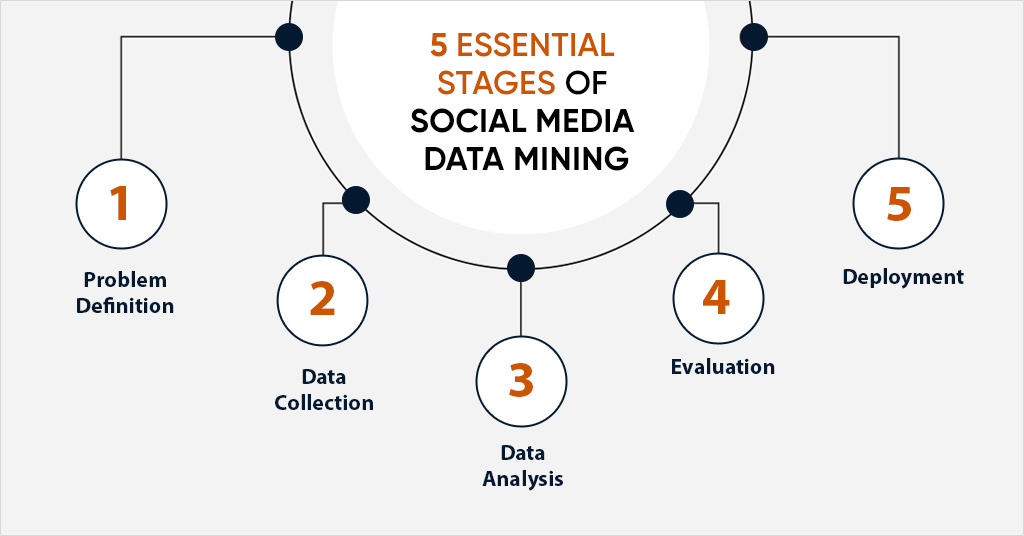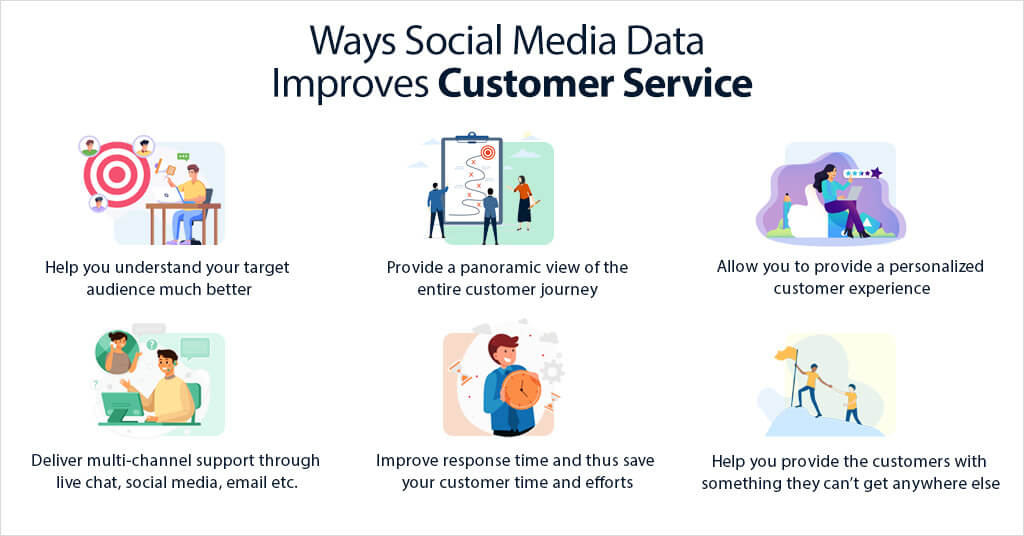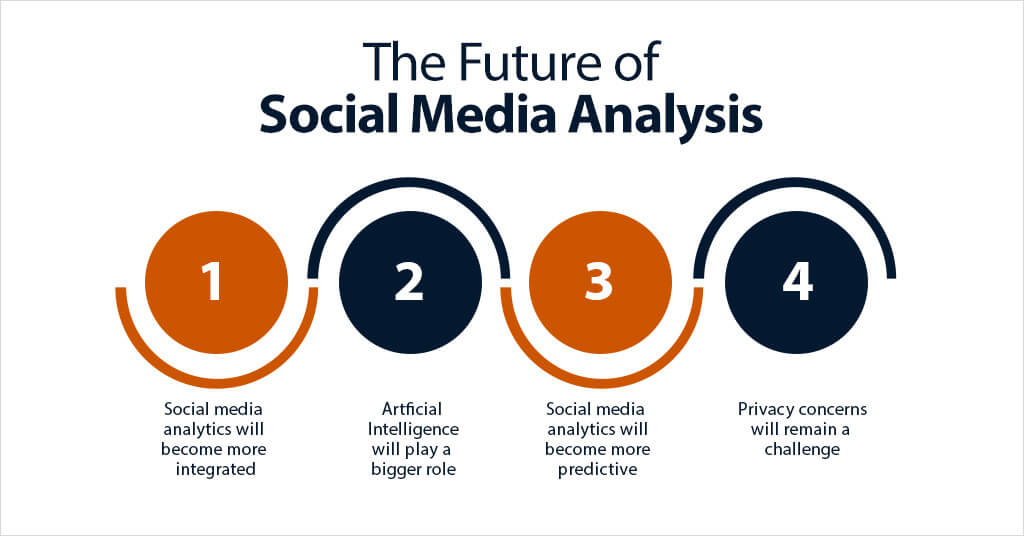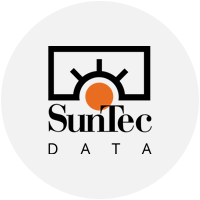
Do you know what your customers are thinking in real time about your products or services? Can you anticipate their needs before they express them based on their buying behavior? The answers to these questions may be closer than you think, hidden in plain sight across the vast array of social media platforms. With billions of people using these platforms worldwide, they have become a vast repository of customer data and insights.
Every like, share, comment, and interaction on social media holds valuable information about customer preferences, behaviors, and trends. However, many businesses fail to use this data effectively. This is where social media data mining becomes essential. In this blog, we will explain how businesses, regardless of their size or industry, can effectively benefit from it.
- How Social Media Data Mining Works?
- How Social Media Data Mining Benefits Businesses?
- Gain Real-Time Insights into Customer Sentiment and Preferences
- Identify and Capitalize on Emerging Market Trends
- Improve Customer Service and Support through Proactive Engagement
- Optimize Marketing Strategies and Ad Targeting
- Conduct Comprehensive Competitor Analysis
- Identify and Engage with Influential Brand Advocates
- Predict and Prepare for Potential Crises
- Research for Market Entry and Expansion
- Emerging Technologies and the Future of Social Media Data Mining: 2024 and Beyond
- On a Concluding
How Social Media Data Mining Works?
As the name suggests, it is the process of extracting valuable information from social media platforms to uncover patterns, trends, and insights. This involves collecting data from various sources, such as user profiles, posts, comments, likes, shares, and other interactions, and analyzing it to gain a deeper understanding of customer behaviors, preferences, and opinions. It includes:

- Data collection: The first step in this process is gathering data. This can be done using APIs provided by social media platforms, web scraping tools, or social media monitoring services. Data collected can include text, images, videos, and metadata such as timestamps, location tags, and user demographics.
- Data processing: Once collected, the data needs to be processed and cleaned. This involves removing irrelevant information, handling missing data, and organizing it into a structured format suitable for analysis.
- Data analysis: The processed data is then analyzed using various techniques such as:
- Sentiment analysis: Determining the emotional tone behind a series of words to understand public sentiment towards a brand, product, or service.
- Trend analysis: Identifying emerging trends and patterns over time.
- Network analysis: Examining the relationships and interactions between users to identify key influencers and communities.
- Topic modeling: Discovering the main topics or themes discussed in social media posts.
Thus, it is a powerful tool that goes beyond simply counting likes or followers. It allows businesses to delve deeper into the data to identify patterns, predict future developments, and gain actionable insights.
How Social Media Data Mining Benefits Businesses?
1. Gain Real-Time Insights into Customer Sentiment and Preferences
Social media data mining enables businesses to tap into the immediate thoughts and feelings of their customers. This real-time insight is invaluable for quick decision-making and responsive strategy adjustments. By analyzing comments, posts, and reactions, you can understand how your audience perceives your brand, products, or services as events unfold. This immediacy allows for rapid response to emerging issues or opportunities.
For instance, a restaurant chain could use sentiment analysis tools to monitor customer reactions to a new menu item across various social platforms. If there’s a surge of positive feedback about a particular dish, they could quickly promote it more heavily or ensure its availability. Conversely, if there’s negative sentiment about an aspect of service, management can address the issue promptly before it affects the brand’s reputation more broadly.
2. Identify and Capitalize on Emerging Market Trends
Social media often acts as an early warning system for emerging trends. By monitoring conversations and hashtags, businesses can spot these trends before they become mainstream, giving them a significant competitive advantage. This foresight gained through leveraging social media data, allows companies to develop new products, modify existing offerings to meet upcoming demand, and adjust their product marketing or sales strategies. It’s not just about reacting to trends but potentially setting them.
For example, a beauty brand might notice an increasing number of posts about natural, chemical-free products. They could use this insight to fast-track the development of a new natural product line, positioning themselves at the forefront of this emerging trend.
3. Improve Customer Service and Support through Proactive Engagement
Leveraging social media data allows businesses to move from reactive to proactive customer service. By monitoring mentions and direct messages, companies can address customer issues quickly, often before they escalate into larger problems. This approach not only resolves individual issues but also demonstrates to a wider audience that the company is responsive and cares about customer satisfaction. It can turn potential negative experiences into positive ones, enhancing overall brand perception.
An example could be a telecom company that uses social listening tools to identify customers experiencing service outages. By reaching out proactively with information and support, they can mitigate frustration and showcase their commitment to customer care.

4. Optimize Marketing Strategies and Ad Targeting
Social media data extraction and analysis provide rich insights into audience behavior, preferences, and engagement patterns. This information can be used to refine marketing strategies and improve ad targeting, leading to more effective campaigns and a better return on investment. By understanding which types of content resonate with different segments of their audience, when their audience is most active, and what platforms they prefer, businesses can tailor their marketing efforts for maximum impact.
For instance, a fitness equipment company might discover through data analysis that their video demonstrations get the most engagement when posted on Instagram on weekend mornings. They can then adjust their content calendar to capitalize on this insight.
5. Conduct Comprehensive Competitor Analysis
Social media data mining isn’t limited to a company’s own brand—it also provides valuable insights into competitors’ strategies and performance. This competitive intelligence can inform strategic decision-making and help identify opportunities in the market. By analyzing competitors’ social media presence, businesses can understand what’s working well for others in their industry, identify gaps in competitors’ offerings, and benchmark their own performance against industry standards.
A software company, for example, might analyze the social media engagement around a competitor’s new feature launch. This analysis could reveal aspects that resonated with users or areas where the competitor fell short, informing their own product development and marketing strategies.
6. Identify and Engage with Influential Brand Advocates
Data mining can help businesses identify their most loyal and influential customers, who can become powerful brand advocates. These individuals often have a significant following and can greatly amplify a brand’s message. By identifying these potential brand ambassadors, companies can cultivate relationships with them, potentially offering exclusive access, collaborations, or other incentives to encourage their continued support.
For example, a sportswear brand might discover through social media analysis that certain fitness influencers frequently mention their products positively. They could then develop an influencer marketing program, offering these individuals early access to new product lines or inviting them to special events.
7. Predict and Prepare for Potential Crises
Data mining can act as an early warning system for potential crises in business. By monitoring social media sentiment and identifying unusual patterns or sudden changes in conversation volume, businesses can often anticipate issues before they escalate. This foresight allows companies to prepare their response strategies in advance, potentially mitigating the impact of a crisis or even preventing it altogether.
For instance, a car manufacturer might notice an uptick in social media posts about a specific mechanical issue with one of their models. They could use this information to investigate the problem, prepare a response, and, if necessary, initiate a recall before the issue becomes more widespread and damaging to their reputation.
8. Research for Market Entry and Expansion
Social media data can provide granular insights into how preferences vary across different customer segments, whether defined by age, location, interests, or other factors. This information can be used to tailor product offerings, marketing messages, and even distribution strategies to specific groups. By understanding these nuanced preferences, businesses can create more targeted and effective strategies, potentially opening up new market opportunities.
A global snack food company, for example, might discover through social media analysis that their spicy flavors are particularly popular among young adults in urban areas of Southeast Asia. This insight could inform product development, distribution decisions, and marketing campaigns in that region.
Emerging Technologies and the Future of Social Media Data Mining: 2024 and Beyond
The evolution of technology and shifts in consumer behavior are creating an environment where leveraging social media data is not just beneficial but essential for maintaining a competitive edge. Several trends are poised to make social media data mining even more crucial:

- Artificial intelligence and machine learning: Advanced AI algorithms will enhance our ability to extract meaningful insights from vast amounts of unstructured social media data. For example, AI can analyze sentiment across millions of social media posts to predict consumer preferences or identify emerging trends. Companies like Netflix use AI to recommend content based on social media interactions and viewing habits.
- Internet of Things (IoT) integration: With the proliferation of connected devices, the volume and variety of data available will increase dramatically. Social media data mining will play a key role in making sense of this expanded data ecosystem. For instance, retail businesses can integrate IoT data from smart devices to analyze customer behavior patterns both online and offline, improving personalized marketing strategies.
- Augmented and virtual reality: These technologies are becoming more prevalent in social media platforms, generating new types of data to mine. For example, companies that build their AR filters on platforms like Instagram can analyze engagement metrics such as usage frequency, interaction times, shares, and user-generated content featuring the filter. These insights enable businesses to gain a deeper understanding of user preferences, optimize marketing campaigns, and enhance user engagement through personalized AR experiences.
- Privacy regulations: With growing concerns over data privacy, businesses that can effectively mine social media data while respecting user privacy will have a significant advantage. Compliance with regulations like GDPR ensures trust and transparency, enhancing customer loyalty. Companies like Apple prioritize user privacy while leveraging social media data insights to improve user experience and product offerings.
- Predictive analytics: Data mined from social media will increasingly be used to predict future trends and behaviors. Retailers use predictive analytics to forecast demand based on social media conversations and influencers’ impact, enabling proactive inventory management and marketing strategies.
As these trends unfold, businesses that fail to leverage social media data effectively risk falling behind. The companies that will thrive are those that conduct data mining from social media to make it a core component of their business strategy. Embracing these advancements allows businesses to stay agile, responsive, and ahead of the competition in an increasingly data-driven world.
On a Concluding Note
Social media data mining is at the forefront of the transformative digital era, offering access to intricate consumer behaviors and preferences. By harnessing advanced analytics and staying abreast of evolving trends, businesses can extract invaluable insights to drive informed decision-making. Many businesses have witnessed tangible benefits following their investment in data mining. Discover this through the example of a leading US-based Healthcare IT Development & Consulting Firm. Know how the firm significantly sped up data acquisition by 5 times using our effective blend of automated and manual data mining techniques.

.svg)



